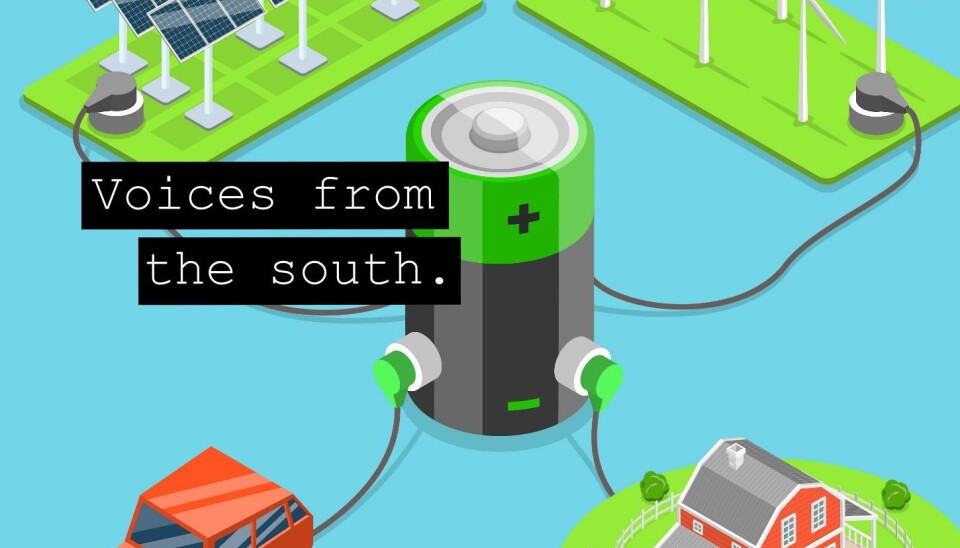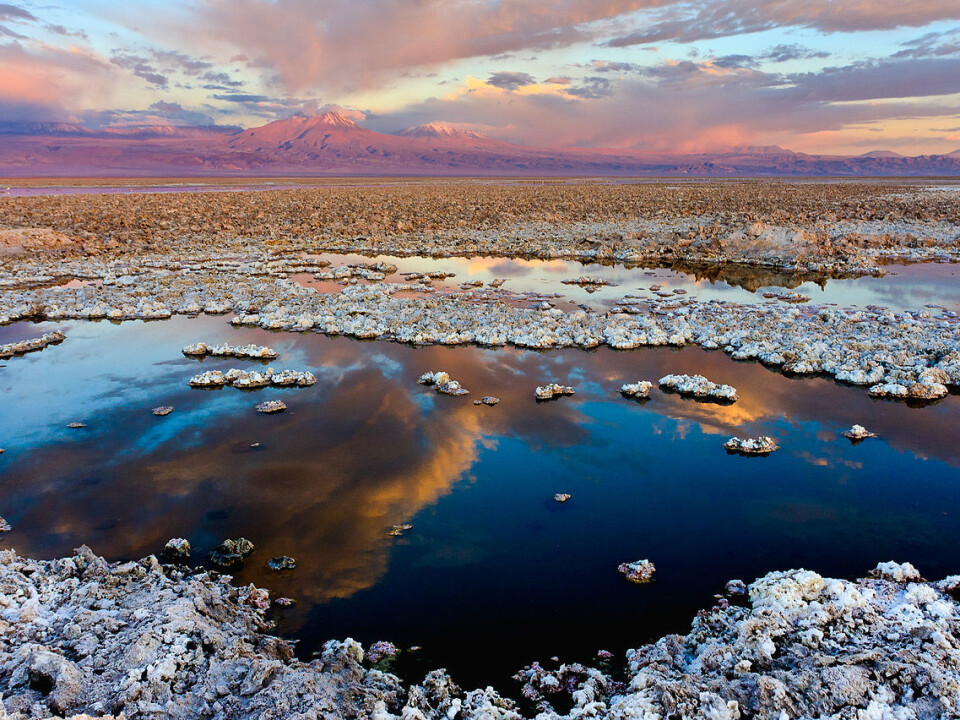
Can we really electrify the entire world?
Yes, but we will need to recycle crucial elements like lithium if we are to meet demand and avoid destruction of vulnerable ecosystems in Latin America.
Imagine a completely electrified world.
Where everyone commutes by electric bikes, cars, trains, aircrafts and even electric ships. Where entire cities are powered by solar panels and all electric infrastructure relies on smart grids and giant batteries.
This is the dream for those who are trying to battle carbon emissions. But for some, this dream can quickly turn into a nightmare.
Producing electric-powered items requires batteries, and this requires vast amounts of minerals, in particular, lithium.

Today most lithium reserves are found in Latin America in the so-called ABC triangle (Argentina, Bolivia and Chile). But, mining for this crucial element has caused no end of torment for environmental preservation in the region.
So how can we transition away from fossil fuels without destroying precious, unique habitats elsewhere in the world? Our new study has some answers.
Lithium precious creatures
Lithium is found in brine deposits, which are salt pans, called salares.
They form in the basin of evaporated lakes, in high altitude, arid regions of South America.

To extract lithium, the dry salt is dried out further, by evaporating, on average, half a million liters of saltwater. This creates large volumes of brine waste and leads to water shortages in an already dry region.
In such arid regions, ecosystems are particularly vulnerable to water shortages. And the huge amounts of water used in lithium mining is making this situation even worse for the local flora and fauna.
The salares territory hosts a biodiversity hotspot and cradles several native species like the vicuña – the wild ancestor to the emblematic alpaca, highly valued for their wool. In case of water scarcity and changes to their habitat, these animals could be endangered and disappear from the area, forever.
A less obvious potential impact of lithium mining, is related to the microbial activity (stromatolites) in the salares. These ecosystems have an important scientific value since it could cast crucial light on the very earliest appearance of life on Earth. The mere existence of mining activities on the area can sweep away these microbial ecosystems forever.
So the dilemma is, to what extent do we have to sacrifice such unique ecosystems to electrify the world?
What should we do?
Rather than digging for ever more minerals, it makes more sense to try to recycle the ones that we have already extracted from worn batteries and old devices.
Yet, some researchers question whether recycling is really a viable solution (Kushnir and Sanden, 2012) (Pehlken, et al., 2017).
Compared with extracting raw lithium, recycling costs a lot, and used lithium can only be extracted in small quantities of relatively low-grade. And so, there is no market for second hand lithium today.
However, lithium prices are likely to climb as demand continues to rise, making recycling an economically attractive prospect.
Why should we recycle?
Recycling is a way to conserve natural resources. And for economists recycling offers two clear advantages:
First, recycling boosts supply by recovering waste, easing affordability concerns, and even contributing to the long-term growth of the economy.
Second, recycling can mitigate environmental damage if fewer quantities of primary minerals are extracted.
In my own research, [Rosendahl and Rubiano (2018)], I investigated how lithium recycling might address a possible scarcity of this vital resource, and whether government intervention is needed to make recycling happen.
We demonstrated two things: (i) the future prospects for the lithium market depend heavily upon recycled lithium supply, and (ii) unless an efficient market for depreciated lithium develops, a government intervention is required to obtain optimal outcomes.
In fact, we showed that if we do not start recycling lithium then it will become increasingly scarce and prices will rise much faster as a result.
Our analysis suggests that between now and 2100, around half of all lithium should be produced by recycling if we are to keep up with demand.
How much lithium do we need to recycle?
A lithium-ion battery –LiB- can typically last for up to eight years. Currently, less than 10 per cent of used batteries are collected in the USA and less than 1 per cent in Europe. Lack of regulation aggravates LiB waste management, and neither the market nor governments provide incentives to collect used LiBs.
Researchers continuously debate the technical requirements needed to reduce recycling costs. For example, better battery design can make recycling easier, reduce material losses, and increase mineral recovery. Strict industrial standards could ensure that recovered material meets the same high quality-grade as freshly extracted minerals.
Moreover, recycling industry profits build upon economies of scale and the infrastructure capable to absorb the vast diversity of battery design.
Local market conditions can also make recycling of lithium more feasible. Yet, there is no consensus as to how local developments could reduce dependency on foreign lithium and shape a globally competitive market for the recycled mineral.
This is a question for Europe and industrialised countries in the northern hemisphere that are making great advances in grid storage and electric car production and consumption.
What can governments do?
In a free market, rising lithium prices will drive up the incentives to recycle. But consumers do not necessarily consider the value of lithium waste for recycling.
Our research suggests that subsidizing either buyers or sellers of both raw and recycled lithium could encourage greater recycling.
If incentives are created, they are likely to bring greater social benefits, as greater quantities of lithium for an extended time will be available for consumers, producers, and recyclers. The size of the optimal subsidies depends however, on technological progress to extract and recycle, the quality-grade of recovered lithium, and how demand for lithium changes. Subsidies may of course be difficult to implement in reality.
One could also advocate subsidising research and development to promote a technological push in recycling that could lower long-term recycling costs. An efficient collection system requires a mechanism to give consumers the incentive to make lithium waste available for recycling. Governments might have to intervene and create a collection system where such a solution does not already exist.
So, what now?
Lithium has an important role in a decarbonised economy. Nonetheless, it requires lithium mining and waste management, which come with critical environmental impacts and social costs.
Addressing these issues will take time. But until then, there are still steps that you and I can take in our daily lives to reduce lithium waste.
Europe and the Nordics are already on the path to introducing more green technology, but this transition should not come at a cost for sensitive and important ecosystems on the other side of the planet, such as those here in Latin America.
What you have in your pocket is not a simple smart phone. But a dense cocktail of almost all the elements in the periodic table: Lithium, Cobalt, Indium, Gold, and many other precious and scarce minerals.
So, the next time you decide to change or dispose of your old phone, think twice. You can still support the electric revolution by valuing the electronics that you already own.
----------------
This article is part of the Voices From the South theme at Forskning.no. Read the Norwegian version of this article at forskning.no and check out the theme page here on ScienceNordic for more articles written by scientists and researchers from the Global South.






























